 This content was written by a student and assessed as part of a university degree. E-IR publishes student essays & dissertations to allow our readers to broaden their understanding of what is possible when answering similar questions in their own studies.
This content was written by a student and assessed as part of a university degree. E-IR publishes student essays & dissertations to allow our readers to broaden their understanding of what is possible when answering similar questions in their own studies.
Along with strong tensions during the Cultural Revolution the only major confrontations with the Muslim World (Umma) modern China has had to record were the interdependent Dungan revolt (from 1862 to 1877) and Panthay rebellion (1856-1873). In spite of the manifest intertwining of social religion in their political dynamic none of the two was religious in essence. The two were traversed with abominable atrocities and death counts but scholars have rarely emphasized how similar their dynamic was to that which plagued European nations in the era of religion wars, where religion was but a proximal means to fuel a willingness to fight serving a greater, distal political purpose.
In China the sedentary component of so-called “Muslim Minorities” may represent an absolute of about 30 million people[1] which extrapolations from the PRC’s 1949 census estimate of more than 45 millions allow to consider conservative. While the Muslim Chinese are forming an ancient, deep-rooted and inseparable component of the Chinese Civilization, the China-Umma relationship is rarely considered as essentially self-reflective for China. Thus in complement to earlier scholarly approaches[2] studying Uyghurs under the angle of either separatism or latent colonialism (Kurlantzick 2004, Gladney 2004, Dreyer 2005 and Van Wie Davis 2008) this article’s vision is that of seeing China and its Muslim population a single entity which has not yet achieved awareness of its fundamental historical, cultural and sociological unity. We argue such awareness is essential to a grand Peace doctrine in both foreign and public diplomacy (ie propaganda) that would in turn be most profitable to China. Indeed in securing a credible and profitable access to the Global Balkans and thus the Arc of Crisis China will need to assert a constructive exemplarity at the domestic level. Though it is still focused on the Iran-Israel-US triangle the Umma is and will be watching China with growing attention.
While the chaotic period following WWII, the Cultural Revolution and the Great Leap Forward has much clouded the old and fundamental contribution of Islam to its civilization (see Christoffersen 1993), modern China finds itself largely distracted from the various manifest precedents of (both cultural and political) constructive integration in its history. Thus for the Chinese elites, strategists and scholars as well as for the public the situation of a “clash of ignorance”[3] is already arising, paving the road to irreversible contempt and violence. With the rapidly evolving situation in its autonomous region of Xinjiang, the PRC will have to choose one out of many qualitatively different postures, and induce a complete phase transition in its relationship with the Umma. Such relations could either evolve towards cooperation, leadership and construction, with their associated goodwill and confidence, or towards coercion, enmity and destruction, with their associated mistrust and nefarious diplomatic prejudice poisoning further partnerships. As the particular methodology of Peace Studies could shed light on the means to fulfill and sustain the first of these two scenarios, it is the purpose of this article to provide – in yet the tradition of realpolitik – a prescriptive rationale in such direction.
Written at: Centre d’Etudes Diplomatiques et Strategiques (Paris) / Groupe d’Etudes Orientales (Strasbourg University) Written for: Brendan Simms (Cambridge)
Idriss J. Aberkane, Apr 29 2011
lire l’article complet : http://www.e-ir.info/2011/04/29/yin-or-yang-china-and-the-muslim-world/
